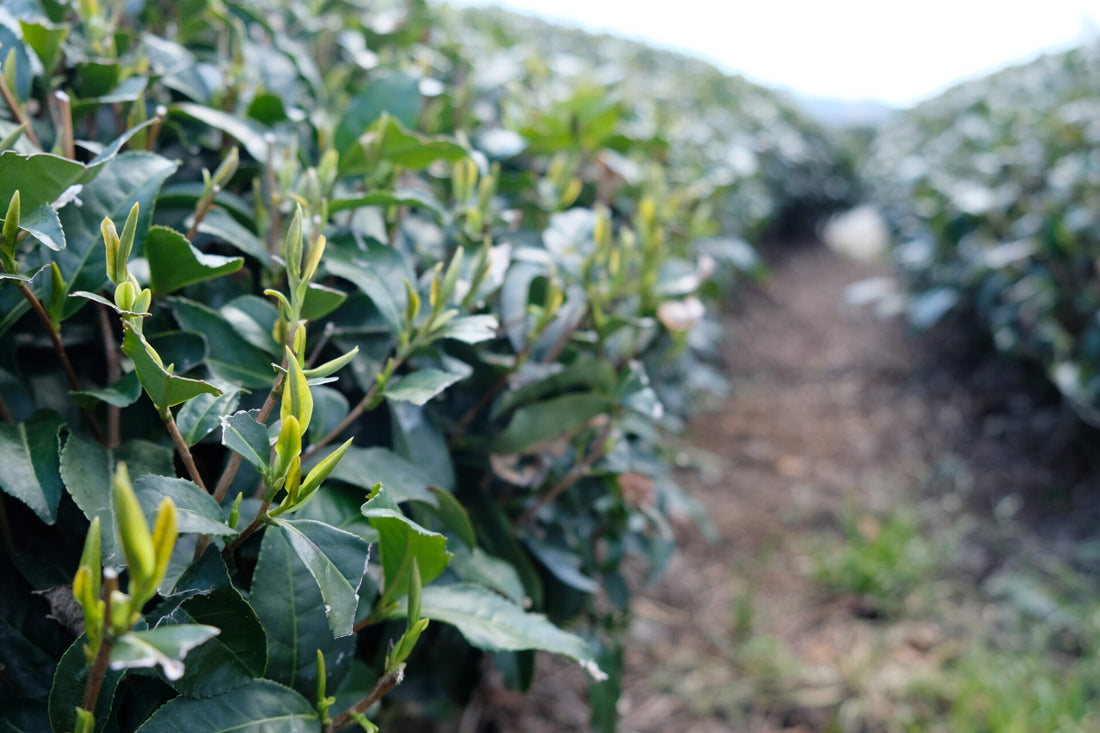
How is Matcha Made in Japan?
The world’s highest quality matcha comes from Japan, where farmers have been expertly cultivating and harvesting this superfood for centuries. They follow traditional methods that yield the best aroma and flavor. From farming to packaging, meticulous care is taken to prepare matcha. There are a few different regions in Japan that produce matcha, and the taste and quality of each one varies.
Where is matcha grown in Japan?
Japan has several matcha-growing regions. Each has varying qualities and tastes of matcha. Some regions are famous for their organic and ceremonial-grade matcha, whereas others grow conventional matcha that makes up the bulk of Japan’s matcha exports.
Each region has a unique ‘terroir’, which refers to its microclimate for matcha growing. Matcha from Uji is considered the most prestigious as this location has the optimal terroir. Uji matcha is grassy and slightly sweet, with umami notes and a creamy mouthfeel. Kagoshima, another popular region for matcha cultivation, produces mild and grassy-tasting matcha.
Matcha is also grown in other regions, including Shizuoka and Nishio in the Aichi prefecture.
Shading tea trees to make matcha
Matcha, like all tea, comes from the leaves of the Camellia Sinensis plant. To make matcha, the tree is carefully kept shaded in the sun for two to six weeks. It is essential to keep them protected from the sun to maximize the chlorophyll content, increase the umami flavor, and give matcha its vivid green color. The amino acid L-theanine is also increased by shading the plant, giving the matcha a sweeter taste.
Organic matcha is fertilized using only natural fertilizers made from composted leaves and flowers. Strict regulations mean that they cannot be sprayed with pesticides either. Conventional matcha, on the other hand, is sprayed with pesticides and fertilized with commercial fertilizers approved for agricultural use in Japan.
Harvesting matcha leaves
Traditionally, matcha leaves are handpicked. In recent times, farmers have also begun to machine-harvest matcha. This type of matcha is usually a bit cheaper as it is less labor-intensive. However, the quality of handpicked leaves is unbeatable, as only the best young leaves are chosen.
The timing is also essential when it comes to harvesting leaves for matcha. The ideal time to do this is considered to be from mid-April to mid-May. The first harvest of the year is the most important one as it produces the best quality matcha tea with the most vivid color and aroma. This batch of matcha is ceremonial-grade and usually the most expensive. Culinary-grade matcha is typically produced from the batches that come after and have not been kept in the shade for as long as leaves used for ceremonial-grade matcha.
Treating and preparing matcha leaves
After being picked, matcha leaves are washed several times and then steamed. Steaming the leaves is vital as this stops the oxidation process and allows the leaves to stay a vibrant green color. Next, the leaves are dried in an oven. The heat is kept low to prevent the leaves from browning.
After this, they are sorted, and leaves with defects or impurities are discarded. At farms with higher quality control, the leaves go through multiple rounds of sifting. The leaves that finally make the cut are de-stemmed, then cut into small pieces to allow for a finer end product. At this stage, matcha leaves are called tencha. They can be stored in this form for up to a few years with refrigeration.
At times, different types of tencha leaves are mixed together to create the desired blend. This provides a custom flavor and aromatic profile. Some farms make signature blends by combining specific quantities of certain tencha leaves.
The tencha is then ground into a very fine powder. This powder is what we call matcha. Traditionally, the leaves were hand-ground using stone. Conventionally, this is done with the help of grinding machines. Grinding the leaves is the final step in the production process. After this, the matcha is packaged and sent to other provinces and cities within Japan, as well as exported to numerous countries.
How is matcha enjoyed in Japan?
Since matcha is grown in Japan, it would be helpful to know how the Japanese prefer to prepare it. Matcha is indeed a very popular ingredient and is available pretty much everywhere in Japan, from large cities like Tokyo to small countryside towns.
In Japan, people drink matcha at ceremonies and other special occasions. For this, they typically use the ceremonial-grade matcha, which can be quite expensive. In a tea ceremony, matcha is carefully prepared and presented. The entire process of making and serving matcha is seen as special- almost sacred- in Japanese culture.
Japanese people also enjoy matcha on a daily basis, usually in the form of tea made from whisking matcha powder into hot water. Many cafes, restaurants, and street vendors have also popped up all around the country, making stunning and delicious matcha-infused treats. Popular matcha snacks include cakes, lattes, and ice cream.
Conclusion
The highest-quality matcha is made in Japan, where traditional techniques are used to this day. The result is a vivid green powder with a delectable aroma and flavor. Growing, harvesting, and preparing matcha is traditionally a slow and labor-intensive process. Matcha, especially organic and ceremonial-grade varieties, cannot be harvested multiple times a year. Their scarcity makes them more expensive and harder to come by.
While some Japanese farmers still stick by the traditional way of farming matcha, many have modernized to meet the growing demand for matcha worldwide. Despite this, they maintain quality and taste, making Japanese matcha well-reputed worldwide. The terroirs in Japanese matcha-growing regions are considered the best for matcha worldwide, which is another reason matcha from here is so popular.
